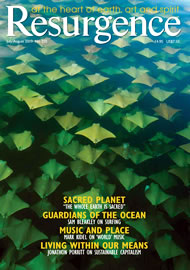PLANT LIVES: BORDERLINE Beings in Indian Traditions presents an extraordinary and intriguing theme, coupled with extensive research, making for a highly reflective read. The book examines, perhaps for the first time, how the primordial traditions of India – Hinduism, Jainism and Buddhism – viewed the nature of plants and their role in phenomenal existence – known as the ‘wheel of life’ or samsara. The author addresses the provocative question of whether plants were perceived by Indigenous peoples as sentient, feeling pain and pleasure and being karma-bearing, or merely lifeless and inert, and he utilises a broad spectrum of ancient texts related to these sacred traditions to unearth explanations. He also draws on a broad cross-section of present-day ecological movements that ground themselves in this sacred and traditional perspective.
The author explains that the idea of “borderline beings” assigns a neutral interpretation to the role of plants that neither affirms nor denies that plants are sentient per se. The notion of borderline beings is put forward because an array of traditional texts, especially within Hinduism, and including Jainism and Buddhism, expressed differing views on the nature of plants. The author states that occasionally plants were perceived in one context as animate and in another context as inanimate.
However, trees especially were considered to be alive and were venerated – even regarded within traditional systems to contain the attributes of sattva or purity and intelligence, offering seekers “a model for spiritual practice that transcended the polarity of tamas or dullness, ignorance and inertia”. This sattvic role demonstrates the selfless service of plants and trees to human beings, simultaneously bringing to light the reciprocal nature of life: “A tree protects as it is protected.”
The author inquires into the origins of the doctrine of ahimsa or nonviolence, describing its relationship to the vegetarian diet, acutely summarised in the Hindu sacred text Satapatha Brahmana: “Whatever food a man consumes in this world, that (food) in return, consumes him in yonder world.” This quote affirms the decisive interconnectedness of all planetary life forms, which readers will find to be a core theme of this book. The chapter titled ‘Plants as Humans: Humans as Plants’ also depicts this interdependence as it pertains to the human individual and his or her fundamental bond to plant life.
The final section of this book, ‘Views On Plants Among Contemporary Environmentalists’, consists of three chapters that provide very informative surveys of today’s environmental movements: ‘Hinduism: New Blooms from Old Roots’; ‘Jainism: Minding the Continuum of Life’; and ‘Buddhism: Nature as Dhamma, Dhamma as Nature’. Each of these three chapters outlines the most relevant points, offering the reader a broad and in-depth look at these noteworthy environmental movements. Prominent teachers and spiritual authorities of these traditions are also presented in these chapters in order to convey their perspectives on the overarching theme of this book, including the significant projects that they are presently undertaking.
It is my hope that this work will provide a noteworthy contribution to an integral ecological orientation that has its roots in the ‘sacred science’ of the Sanatana dharma, known in the West as the perennial philosophy, regarded as the unanimous expression of the spiritual traditions of both East and West. Additionally, this work will make for a valuable foundational text to support the environmental movement and ecological research via the spiritual legacy of India. •
Samuel Bendeck Sotillos is a mental health clinician in California.








